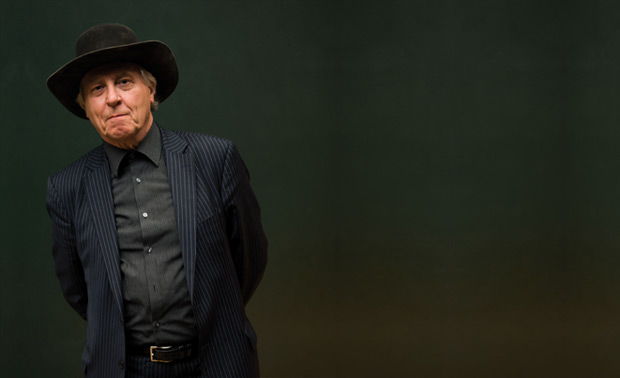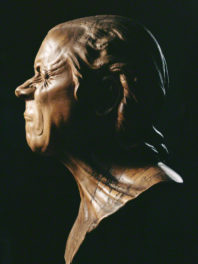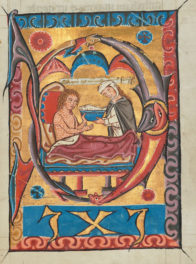Filmmaker Peter Greenaway speaks at the Getty Center tonight as part of our Getty Perspectives lecture series, which invites distinctive artists and scholars to offer their perspectives on the visual arts. I’ve long wanted Peter Greenaway to be part of the series—and here’s why.

Peter Greenaway. Photo: Dennis van Doorn
Over the years I’ve often dragged reluctant friends to see Greenaway’s quirky films. Like Drowning by Numbers, an inhabited Dutch still life combined with the fun of children’s numeric games—two cultural productions I enjoy. Or The Cook, the Thief, His Wife, and Her Lover, with its Baroque mise-en-scènes that featured gourmet cannibalism a year before the trend went mainstream with The Silence of the Lambs.
Greenaway’s films might not be for the weak-stomached, but critics agree that his work shows the marked influence of the filmmaker’s four years in art school, training to be a painter.
So when I heard about Greenaway’s latest project, Nine Classic Paintings Revisited, I was intrigued. I discovered, among other things, that he had somehow convinced the Rijksmuseum in Amsterdam to allow him to project lighting onto Rembrandt’s Night Watch.
After a career of making movies that look like paintings, Greenaway had begun making paintings that look like movies.
After Rembrandt, Greenaway moved to Italy, where he shone his lights onto Leonardo’s Last Supper. At the Venice Biennale in 2009 he installed a replica of Veronese’s Wedding at Cana and again worked his cinematic skills to bring the scene to life. Greenaway’s “visions” truly must be seen to be comprehended, though this video clip gives a taste.
I was fortunate to see Greenaway’s treatment of Veronese in Venice. The Wedding at Cana depicts 126 identifiable characters, including Christ and the Virgin, assembled for the wedding. Greenaway wrote dialogue for all of them, and over 50 minutes we’re privy to conversations in English and Venetian dialect. It’s fairly typical wedding banter: How can they afford such a big wedding? Who’s the guy making a spectacle of himself? When will they serve the meal? Why is the carpenter’s son sitting in the pride of place?
The dialogue is fast and furious, and Greenaway helps us connect words to faces by illuminating the painting and digitally pulling individuals onto side screens. Additional lighting tricks help us see details, such as moments showing the importance of drink at the affair.
Greenaway plans to treat six more paintings he believes have changed the world. Among them, museums willing, will be Picasso’s Guernica, Seurat’s Grande Jatte, a drip painting by Jackson Pollock, and Velázquez’s Las Meninas.
Now in his 60s, Greenaway insists he’ll stop at nine, despite many requests, so the project won’t occupy the remainder of his life. Too bad—it would have been fun to see Ensor’s Christ’s Entry into Brussels come to life and to compare Greenaway’s interpretation with our own.
Most of the techniques Greenaway employs in his treatments are actually already familiar in museum contexts: precise lighting, enlargement of details, explanatory texts, narrative elaboration, compositional models, and audio. Critical reaction to the Veronese treatment was generally quite favorable, but some recent reviews have critiqued the Leonardo installation in New York. Perhaps some segments of the art establishment aren’t quite ready to breach cultural divisions or relinquish interpretive authority.
In any case, expect a lively discussion when Greenaway presents his ideas tonight. A few seats are still available, and you can make a reservation here.




Comments on this post are now closed.